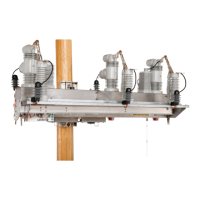Data Types Section
This section congures each message sent in a scheduled test. The predened data
types messages sent are not actual coach or runner messages, but they’re congured
to represent the approximate size of an actual average coach or runner message. The
Denable Data Types setting allows dening message byte size for the sent and
received messages.
Predefined Data Types
The Connection ID in Row 0 is always congured “Coach” and Row 1 is always congured
“Runner.” The Bytes Sent and Bytes Received elds are not congurable.
Definable Data Types
The Connection IDs in Row 2 and 3 are always congured “Undened” whereas the Bytes
Sent and Bytes Received elds are user dened. If one “Unused” entry is changed, a
numerical entry must also be entered for the other eld in that row.
Row
This identies the row: 0 is the rst message type sent, 1 is the second message type
sent, etc.
Data Type
This is the name of the congured test message, such as “Coach” or “Runner.” The message
sent is not an actual coach or runner message, but it should be congured to represent
the approximate size of the average coach or runner message by setting the appropriate
number of sent and received bytes.
Bytes Sent
This eld congures the length of the message being sent for this type. (Range: 1-2048
and Unused, Step: 1, Default: Unused)
Bytes Received
This eld congures the length of the response message automatically generated when
the remote node receives the sent message. (Range: 1-2048 and Unused, Step: 1, Default:
Unused)
S&C Instruction Sheet 766-530 159
Communication Setup

